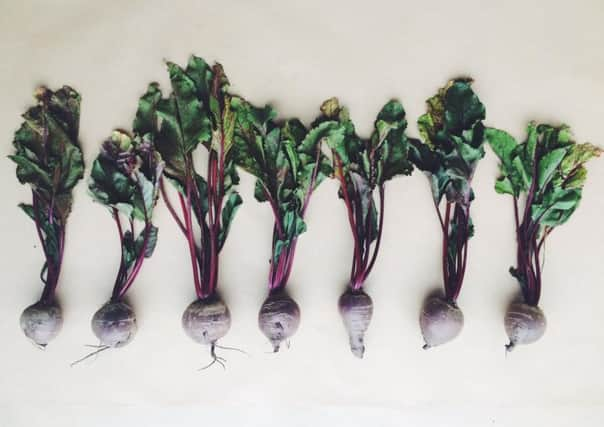Eating seasonally: Earthy and colourful feasting with beetroot


Not only does this traditional vegetable look amazing, it’s incredibly versatile as the leaves, stems and bulbs are all edible and can be used in a variety of dishes. And its versatility isn’t restricted to the kitchen. The Victorians, who admired the lush green leaves, also used beetroot as bedding plants, to brighten up their gardens as well as their plates.
In addition to these aesthetic and culinary properties, the beetroot has long been praised for its nutritional


Advertisement
Hide AdAdvertisement
Hide Advalue and it was one of the first vegetables to be crowned a superfood. Boasting a good source of iron and folic acid as well as nitrates and other antioxidants, beetroot is thought to lower blood pressure and the risk of cancer. It’s no wonder the Greeks and Romans used the vegetable for medicinal purposes some 2,000 years ago.
Despite all this, beetroot is probably one of the more underrated vegetables we stock. And, perhaps this is down to some kind of hangover from the pre-boiled and shrink-wrapped versions we endured as kids. Even when pickled, it wasn’t quite right as it was always too heavy on the vinegar, overpowering the sweet earthy flavours of the beetroot slices.
Now fresh beetroot is widely available and, like all our organic veg, ours is sourced from Sheffield Organic Growers or the Leeds based Organic Pantry. We often have purple and golden varieties in, both with and without their stems depending on how kind the weather has been.
We like to scrub the bulbs clean, chop into wedges and roast in a little rapeseed oil and salt and pepper for about an hour. If we have the leaves we’ll rinse them clean and add them to the dish for the last ten minutes or so, just to wilt them down. Belonging to the same family as chard and spinach, the leaves are also great steamed or stir-fried.


Advertisement
Hide AdAdvertisement
Hide AdFor something lighter, try peeling raw beetroot and slicing it into fine carpaccio slices. Served with soft goats’ cheese, crushed walnuts and a light lemon dressing, this is the perfect colourful starter. But if you really want to showcase beetroot, a Sri Lankan curry is surprisingly good. Not only does it look stunning, especially if you use the deep red bulbs, it tastes great thanks to the sweetness of the coconut milk which contrasts the earthiness of the beetroot perfectly. We’ve just posted a recipe on our website if anyone wants to try it at home.
As a root vegetable, beetroot is quite hardy and available from midsummer to midwinter, or even spring if the weather has been good. We regularly have it in stock so why not pop in to Mr Pickles’ and pick up a bunch? We can almost guarantee it will make those memories of the shrink-wrapped variety disappear!